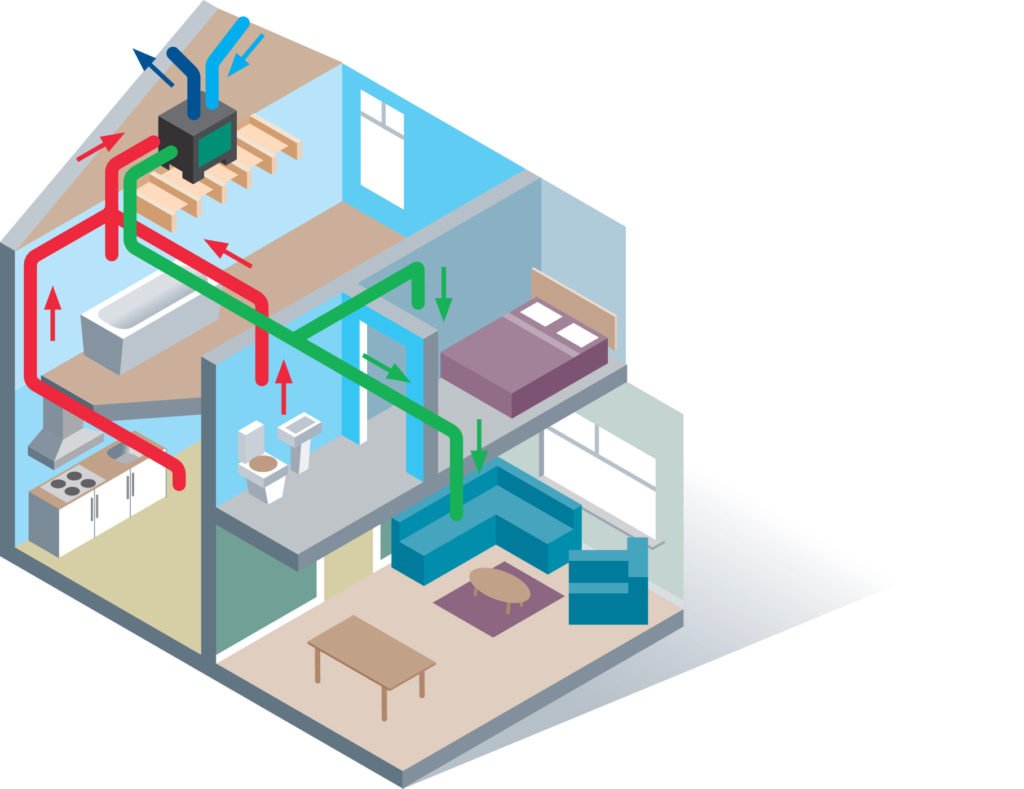The big issue blog from Brookvent on Indoor Air Quality! Reports, press articles and resources all wrapped in one handy location. The reports are available for download at the bottom of the blog by clicking on the blue buttons.
Indoor air quality is always front of mind for Brookvent, we are residential ventilation specialists with over 30 years’ experience in the design & manufacture of market leading MVHR systems and high performance window ventilation.
What is IAQ?
Indoor air quality (IAQ) is a term which refers to the air quality within and around buildings and structures, especially as it relates to the health and comfort of building occupants.
How does it affect us?
There is a growing body of research highlighting the impact poor indoor air quality has on people’s health and some of the recent publications don’t make good headlines:
‘Every Breath We Take’ – Royal College of Physicians “40,000 people are dying in the UK every year due to air pollution”
‘The future of IAQ and its Impact on Health’ – BEAMA “Asthma could increase by 80% from current levels”
Poor indoor air quality can be caused by a combination of pollutants and the following list is not exhaustive; mould spores, pollen and other biological pollutants, Volatile Organic Compounds (VOCs) found in air fresheners, carpet cleaners etc, gases such as radon and carbon monoxide and building materials like paint for example.
IAQ is beginning to be taken more seriously as a health concern and focused in the mainstream media several times in 2016; ‘Pollutant warning over ‘airtight’ modern homes’ BBC, ‘Dirty Secrets: What’s Really in our Air?’ C4 Dispatches.
Peter Howarth, Professor of Allergy and Respiratory medicine at Southampton University, calls for increased awareness of what is being termed ‘Toxic Home Syndrome’.
“Toxic Home Syndrome occurs when individuals and families are exposed to a potent mix of airborne pollutants within the home arising from poor ventilation, causing respiratory and skin diseases to occur more frequently.” (source MyHealthMyHome, see link at the bottom)
How can we fight poor indoor air quality?
The most effective way to fight poor indoor air quality is a mechanical ventilation system (if this isn’t feasible see some of the tips below for a healthier home) and with the growing trend in recent years for airtight properties mechanical ventilation systems with heat recovery (MVHR / HRV) have an added benefit. Not only does a MVHR system assist with great indoor air quality it also offsets the cost of the space heating bill for a property. Mechanical systems in general are demand based and can adequately control the replacement of stale indoor air with fresh filtered outside air – protecting occupants from contaminants.
In the illustration below the red ducting shows the warm, moisture-laden, polluted air extracted from the wet rooms (bathroom, kitchen etc) and the green represents warm, filtered fresh air being supplied to the habitable rooms. The dark blue ducting shows the stale, polluted air being expelled to outside and light blue represents fresh air being drawn into the system, filtered, then distributed throughout the habitable rooms (living room, bedroom, etc)
IAQ is a massive talking point for the HVAC industry as we have to consider indoor air quality in the design, manufacture and installation of HVAC products. We also come face to face with the effects of poor indoor air quality in our daily jobs. At Brookvent we design & manufacture Heat Recovery Ventilation systems (HRV / MVHR) and have been confronted with this first hand when filters go unchanged in our MVHR systems. In the picture below dust and pollutants have been allowed to build up in the system beyond the recommended period of replacement.
We recommend changing the filters in our aircycle units every 9-12 months in general, and if you live in a built-up urban environment every 9 months is recommended. This allows your MVHR system to operate at an optimum level, without putting undue pressure on performance, and provide occupants with continuous, fresh filtered air. Always check and replace filters according to the manufacturer’s guidelines!
Top 3 tips for a healthier home
- Make sure you have effective ventilation throughout your home by installing a mechanical ventilation system
- Use eco-friendly cleaning & beauty products and replace your shower curtain regularly
- If you notice any deterioration in your health make sure your home is radon free by having it tested
DOWNLOAD Zero Carbon Hub DOWNLOAD Royal College of Physicians DOWNLOAD BEAMA report
BBC news piece – warning over airtight modern homes
My House My Home – very useful resource for indoor air quality advice and information








